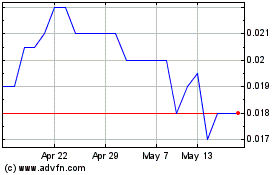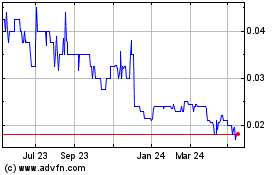TIDMBZT
RNS Number : 0017H
Bezant Resources PLC
24 July 2023
24 July 2023
Bezant Resources Plc
("Bezant" or the "Company")
Results from Phase 1 Metallurgical Test Work on Kanye Manganese
Sample
Bezant (AIM: BZT) is pleased to provide information on
encouraging results of Phase 1 metallurgical testing carried out by
Wardell Armstrong International ('WAI') on a sample from its' 100%
owned Kanye manganese exploration project in Botswana. The primary
objective of the work was to investigate the amenability of
extracting manganese from the Kanye mineralisation by sulphuric
acid leaching.
Highlights:
-- Sulphuric acid leaching successfully demonstrates an
amenability to extract manganese from the Kanye sample into
solution, with recoveries of up to 99.4% Mn achieved at a
temperature of 60(o) C.
-- Sulphur dioxide addition was found to have a direct
correlation to the overall manganese recovery.
-- Most tests demonstrated fast leach kinetics with relative
manganese recoveries after 1 hour of leaching ranging up to
90.7%.
-- Whole rock analysis showed relatively simple mineralogy, the
main manganese mineral in the Kanye sample being pyrolusite, which
is the chief ore mineral for mine production worldwide.
-- Based on the encouraging initial results, Bezant has engaged
WAI to carry out Phase 2 testwork to optimise the leaching
parameters for economic processing of a manganese ore, whilst
tracking other elements relevant to the economics of battery-grade
manganese production.
Colin Bird, Executive Chairman of Bezant, commented :
"The first phase of metallurgical testing is highly encouraging
in that we have demonstrated our ability to recover a high level of
manganese. The next phase will move towards commercial optimisation
of the leaching parameters, with specific emphasis on limiting
sulphuric acid consumption. We are aiming for battery grade
manganese production which is much sought after and we look forward
to moving towards resource definition and a preliminary economic
assessment."
Kanye Phase 1 Metallurgical Test Work
Wardell Armstrong International (WAI) was commissioned by Bezant
to undertake a programme of metallurgical testing on a sample from
the Kanye manganese deposit, Botswana. The primary objective of the
testwork was to investigate the amenability of effectively
extracting manganese from the mineralisation by sulphuric acid
leaching. A secondary objective was to undertake a small programme
of sample characterisation including chemical, XRF and XRD
analysis.
X-Ray Fluorescence analysis on the whole rock samples was
conducted to determine the weight percentage of major rock-forming
elements. The results showed that the sample primarily consisted of
silicon dioxide and manganese oxide constituents, with minor phases
of iron oxide and aluminium oxide.
X-Ray Diffraction analysis on the whole rock sample was
conducted to determine the weight percentage of individual mineral
phases. The results showed that the sample primarily consisted of
quartz, with lesser pyrolusite, goethite and talc.
WAI determined the Kanye composite to have a manganese head
grade of 15.48% Mn obtained using an aqua regia digestion with an
ICP-OES finish.
Six leach tests were conducted on the sample under varying
conditions such as grind size, sulphur dioxide addition, and pH at
a temperature of 60(o) C. A benchmark review of similar projects
found sulphur dioxide to be an important parameter in the reduction
of manganese to become more amenable to sulphuric acid
leaching.
Table 1 - Whole Ore Acid Leach Test Results for Kanye Mn
Sample
--------------------------------------------------------------------------
Test ID Grind Size SO(2) Addition pH Mn recovery H(2) SO(4)
(D(80) ) Consumption
--------- ----------- --------------- ---- ------------ -------------
um kg/t % kg/t
--------- ----------- --------------- ---- ------------ -------------
ALT1 200 0.34 1.0 1.9 114
--------- ----------- --------------- ---- ------------ -------------
ALT2 150 0.34 1.0 1.5 27
--------- ----------- --------------- ---- ------------ -------------
ALT3 200 500 1.0 99.4 477
--------- ----------- --------------- ---- ------------ -------------
ALT4 200 50 1.0 27.3 35
---- ------------ -------------
ALT5 200 250 1.0 82.6 246
---- ------------ -------------
ALT6 200 250 1.5 79.2 217
========= =========== =============== ==== ============ =============
The relationship observed demonstrates that sulphur dioxide
(SO(2) ) addition has a strong correlation to the overall manganese
recovery (Table 1). Overall manganese recovery ranges from 1.9% to
99.4% for 0.34kg/t to 500kg/t of sulphur dioxide addition for ALT1
and ALT3 respectively.
In ALT6, pH was increased from 1.0 to 1.5 to reduce the overall
acid consumption over the course of the leach to obtain more
economic conditions for processing. Sulphuric acid consumption was
reduced from 246kg/t to 217kg/t resulting in a decrease of overall
manganese recovery from 82.6% to 79.2% for ALT5 and ALT6
respectively.
Except for ALT1 and ALT2, where the resolution of the leach
kinetics could be distorted as a result of poor recoveries, all
tests demonstrate fast leach kinetics with relative manganese
recoveries after 1 hour of leaching ranging from 84.9% to 90.7% for
ALT6 and ALT3 respectively.
Sample Characterisation
-- WAI determined the Kanye composite to have a manganese head
grade of 15.48% Mn obtained using an aqua regia digestion with an
ICP-OES finish;
-- X-Ray Fluorescence analysis found the major elemental oxide
present in the sample is silicon dioxide, with lesser amounts of
manganese, iron, and aluminium oxides at 63.83%, 17.94%, 6.02%, and
2.61% respectively.
-- X-Ray Diffraction analysis found the major mineral phases
present were quartz and pyrolusite at 71.4% and 10.4% respectively.
This is comparable to the metal composition from XRF analysis.
Sulphuric Acid Leach Testwork
-- Sulphuric acid leaching demonstrated an amenability to
extract manganese from the sample into solution. Manganese
recoveries of 99.4% could be achieved at a pH of 1.0 and sulphur
dioxide addition of 500kg/t;
-- Sulphur dioxide addition values were found to have a direct
correlation to the overall manganese recovery;
-- With the exception of ALT1 and ALT2, the leach kinetics of
manganese recovery were shown to be fast, with relative leach rates
after 1 hour ranging from 84.9% to 90.7% for ALT6 and ALT3
respectively;
-- Acid consumption values ranged from 27kg/t to 477kg/t for ALT2 and ALT3 respectively;
-- pH was shown to influence the overall manganese recovery with
a decrease from 82.6% to 79.2% when pH was increased from 1.0 to
1.5 for ALT5 and ALT6 respectively.
Planned Phase 2 Test Work - WAI Recommendations
The primary objective is to continue from the previous phase of
acid leach testwork to optimise the leaching parameters for
economic processing of a manganese ore, whilst tracking a range of
other elements relevant to the economics of battery-grade manganese
production.
Specifically, WAI recommended the following:
-- Undertake further optimisation leaching testwork to decrease
the level of acid consumption over the course of the leach. This
could include variables such as further grind size investigation at
elevated recoveries, leach optimisation at elevated pH, increased
temperature, and calcination pre-treatment;
-- Track the recovery of other analytes that are likely to have
an impact on the downstream purification process circuit of
battery-grade manganese sulphate monohydrate production; and
-- Consider maintaining a redox potential with the addition of
sulphur dioxide throughout the leaching process at defined
intervals, as opposed to a single, substantial addition at the
beginning of the leach process.
For further information, please contact:
Bezant Resources Plc
Colin Bird
Executive Chairman +44 (0)20 3416 3695
Beaumont Cornish (Nominated Adviser)
Roland Cornish / Asia Szusciak +44 (0) 20 7628 3396
Novum Securities Limited (Joint Broker)
Jon Belliss +44 (0) 20 7399 9400
Shard Capital Partners LLP (Joint Broker)
Damon Heath +44 (0) 20 7186 9952
or visit http://www.bezantresources.com
The information contained within this announcement is deemed by
the Company to constitute inside information as stipulated under
the Market Abuse Regulations (EU) No. 596/2014 as it forms part of
UK Domestic Law pursuant to the Market Abuse (Amendment) (EU Exit)
regulations (SI 2019/310).
Qualified Person:
Technical information in this announcement has been reviewed by
Edward (Ed) Slowey, BSc, PGeo, technical director of Bezant
Resources Plc. Mr Slowey is a graduate geologist with more than 40
years' relevant experience in mineral exploration and mining, a
founder member of the Institute of Geologists of Ireland and is a
Qualified Person under the AIM rules. Mr Slowey has reviewed and
approved this announcement.
Glossary
The following is a summary of technical terms:
"mineralisation" Process of formation and concentration of
elements and their chemical compounds within
a mass or body of rock
"Mn" Manganese
"MnO" Manganese oxide
"shale" A fine-grained laminated sediment
"SO(2) " Sulphur dioxide
"XRD" X-ray diffraction
"XRF" X-ray fluorescence
This information is provided by RNS, the news service of the
London Stock Exchange. RNS is approved by the Financial Conduct
Authority to act as a Primary Information Provider in the United
Kingdom. Terms and conditions relating to the use and distribution
of this information may apply. For further information, please
contact rns@lseg.com or visit www.rns.com.
RNS may use your IP address to confirm compliance with the terms
and conditions, to analyse how you engage with the information
contained in this communication, and to share such analysis on an
anonymised basis with others as part of our commercial services.
For further information about how RNS and the London Stock Exchange
use the personal data you provide us, please see our Privacy
Policy.
END
MSCBXGDRLSDDGXS
(END) Dow Jones Newswires
July 24, 2023 09:49 ET (13:49 GMT)
Bezant Resources (LSE:BZT)
Historical Stock Chart
From Dec 2024 to Jan 2025

Bezant Resources (LSE:BZT)
Historical Stock Chart
From Jan 2024 to Jan 2025
